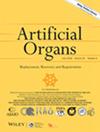Sex Differences in the In-Hospital Outcomes of Left Ventricular Assist Device Implantation: A Population-Based National Inpatient Sample Study From 2015 to 2021
Abstract
Background
Left ventricular assist device (LVAD) implantation can be used to manage advanced heart failure. Debates over sex differences in postoperative outcomes of LVAD implantation remain contentious; there is limited evidence available from the continuous-flow era, particularly following the introduction of third-generation devices. This study aimed to conduct a comprehensive, contemporary, and population-based analysis of the sex difference in the in-hospital outcomes following LVAD implantations.
Methods
Patients who underwent LVAD implantation were selected from National Inpatient Sample from Q4 2015–2021. Multivariable logistic regression was used to compare in-hospital outcomes between females and males, where demographics, socioeconomic status, primary payer status, hospital characteristics, comorbidities, and transfer/admission status were adjusted.
Results
There were 1201 (23.6%) female and 3881 (76.4%) male patients who underwent LVAD implantation. Females and males had comparable in-hospital mortality, MACE, and stroke. However, females had higher diaphragmatic paralysis (aOR = 7.94, 95 CI = 1.46–43.48, p = 0.02). Meanwhile, females had lower cardiogenic shock (aOR = 0.85, 95 CI = 0.73–0.98, p = 0.02), renal complications (aOR = 0.72, 95 CI = 0.62–0.84, p < 0.01), and infection (aOR = 0.70, 95 CI = 0.58–0.86, p < 0.01). Females also had longer hospital length of stay (44.1 ± 40.0 vs. 38.8 ± 30.6 days, p = 0.01) and higher total hospital charges (1293779.0 ± 1182139.0 vs. 1172780.0 ± 917544.0 US dollars, p = 0.04).
Conclusion
In the contemporary era with the introduction of third-generation devices, in-hospital mortality and stroke after LVAD implantation continued to decrease and were comparable in both sexes. However, there are still notable sex-based differences in the complications of LVAD implantation, which underscores the need for sex-specific preoperative risk assessments and tailored perioperative management.


 求助内容:
求助内容: 应助结果提醒方式:
应助结果提醒方式:


